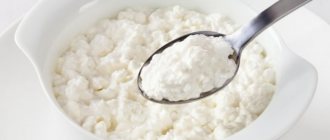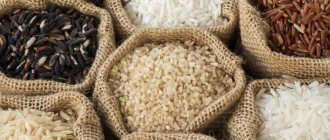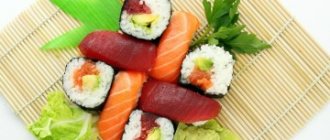What substances does an egg contain?
Eggs themselves are quite a dietary product.
They are always included in the diet of athletes who want to increase muscle mass, and serve as an excellent source of high-quality protein. But nutritionists advise consuming them in very moderate quantities. After all, the yolk of eggs contains a lot of fats, which are a source of bad cholesterol. In fact, the calorie content of scrambled eggs is the calorie content of egg yolks, since they contain up to 90% of all the nutrients that make up this product.
https://www.youtube.com/watch?v=qwwyIWbJBpA
At the same time, you should not completely give up eating eggs. After all, they are an irreplaceable source of many amino acids, proteins, polyunsaturated fats (including oleic) and fatty acids (linoleic and linolenic). In addition to cholesterol, the yolk is a storehouse of useful vitamins.
It contains a lot of vitamin A, E, one of the largest amounts of vitamin D, almost all B vitamins (B6, B12, B1, B7, B3, B5). Yolk also has the highest content of choline (vitamin B4) of all foods, which helps remove cholesterol and protects cell membranes from the effects of free radicals.
It is worth noting that this product, especially its shell, is an excellent source of calcium. In addition, it contains a lot of iron, copper, phosphorus, iodine and a certain amount of such a rare trace element as cobalt.
Eggs are almost completely absorbed by the body. This is good from the point of view of their nutritional value, but when including this product in your diet, you should pay attention to their calorie content, especially if you are on a diet, since 100 grams of eggs (the equivalent of two pieces) contain on average about 150 kcal.
| For quantity: 1 very large egg | ||
| Calories - 147 | Calories in fat - 100 | |
| BJU | ||
| Total fat content | 11.13 | |
| Saturated | 3.24g | |
| Polyunsaturated | 2.44g | |
| Monounsaturated | 4.64g | |
| Cholesterol | 300.75 mg | |
| Total carbohydrate content | 0.62g | |
| Dietary fiber | 0g | |
| Sugar | 0.3g | |
| Squirrels | 10.21 | |
| Vitamins and microelements | ||
| A - 164.25 µg | C - 0mg | |
| B-6 – 0.14 mg | B-12 - 0.73mcg | |
| D - 1.65 µg | E - 0.98 mg | |
| Calcium 46.5 µg | Iron 1.42mg | |
| Magnesium 9.75 mg | Zinc 1.04 mg | |
| Potassium 114 mg | Sodium 155.25 mg | |
Distribution of calories for BJU: | ||
Here are several tables that display vitamins, elements, as well as the nutritional value of one hundred grams of the part of the egg that is edible.
| Vitamins | Amount (mg) |
| A | 0,25 |
| A (RE) | 260 (mcg) |
| IN 1 | 0,07 |
| AT 2 | 0,44 |
| AT 5 | 1,3 |
| AT 6 | 0,14 |
| AT 9 | 7 |
| AT 12 | 0,52 |
| D | 2.2 |
| E | 0,2 |
| E (RE) | 0,6 |
| H | 20.2 (µg) |
| K | 0.3 (µg) |
| PP | 3.6 |
| Beta carotene | 0,06 |
| Kholin | 251 |
| Elements | Amount (mg) |
| Calcium | 55 |
| Potassium | 140 |
| Phosphorus | 192 |
| Chromium | 4 (mcg) |
| Cobalt | 10 (mcg) |
| Sulfur | 176 |
| Molybdenum | 6 (mcg) |
| Iodine | 20 (mcg) |
| Copper | 83 (mcg) |
| Chlorine | 156 |
| Fluorine | 55 (mcg) |
| Zinc | 1,11 |
| Iron | 2,5 |
| Sodium | 134 |
| Selenium | 31.7 (mcg) |
| Manganese | 0,029 |
| Magnesium | 12 |
| Components | Quantity (g) |
| Saturated fatty acids | 3 |
| Ash | 1 |
| Carbohydrates | 0,7 |
| Mono- and disaccharides | 0,7 |
| Water | 74.1 |
| Fats | 11,5 |
| Squirrels | 12,7 |
| Cholesterol | 570 (mg) |
Egg powder
The calorie content of egg powder is extremely high. This product contains about 542 kilocalories per 100 grams. Of course, we never eat this product in large quantities and in its pure form. Otherwise, soon we would all face an acute problem of obesity. The calorie content of dry egg whites and yolks also varies greatly. 100 grams of dry protein contains approximately 336 kilocalories. This is a lot, but still significantly less than in dry yolks. Their calorie content is almost 625 kilocalories per 100 grams.
How many calories are in scrambled eggs?
Scrambled eggs from one frying egg contain 110 kcal. Therefore, in the same dish, two eggs will have 220 kcal, and three eggs will have 330 kcal.
In order to make your preferred fried dish more dietary, you should change the method of preparing it. Instead of a frying pan, you can use a microwave or oven. If you have a frying pan that allows you to fry eggs without oils, it is recommended to arm yourself with it.
The energy value of one fresh egg is approximately 70 kcal. When combined with oil, this number increases to 110, therefore, it is recommended to prepare the dish without this fatty additive.
The calorie content of scrambled eggs greatly depends on the method of its preparation and the additional products that are added to it. For example, if you fry eggs with tomatoes and without oil, then their energy value decreases by 30-50%.
Let's consider various options for preparing your favorite breakfast and its calorie content. We will assume that the dish is made from two eggs.
The calorie content of fried eggs is as follows:
- Fried egg with the addition of 1 tablespoon of vegetable oil. On average, its calorie content is 190-200 kcal: eggs 150 kcal, butter 40 kcal. And if you fry scrambled eggs in butter, the calorie content of the dish will be even higher.
- Fried egg cooked in a frying pan without oil: 150-160 kcal.
- Regular scrambled eggs in vegetable oil. If you beat the eggs before frying them, the calorie content of the dish is slightly reduced. In this case, it will be equal to 150-170 kcal. If you cook without oil in a non-stick pan, subtract another 20-30 kcal.
- Scrambled eggs with tomatoes. When using regular unsweetened vegetables, the calorie content of the dish will be about 160 kcal. If you cook it with sweet cherry tomatoes, expect the energy value to increase to 220-240 kcal!
- Eggs fried in oil with cheese, sausage, and tomatoes will cost 300-340 kcal.
| Qty | A portion | Calories | In the counter |
| 1 very large egg = 75g | 147 | ||
| 196 | |||
| 78 | 78 | ||
| 98 | 98 | ||
| 127 | 127 | ||
| 5 | 5 | ||
| 16 | 16 |
Scrambled eggs with chicken
How to cook the “Total with Bacon” dish
- Bacon should be served in thin slices, tomato - egg with boiling water.
- Remove the skin from the gram and cut into random pieces.
- Place strips of bacon on the heated milk and add until the white melts.
- Next, place the chopped omelet in a frying pan and simmer until the fat is released until the coals are released.
- Add the eggs to the tomatoes and omelet, simmer until they contain milk.
- Add salt to taste.
Prepare your appetite!
Bacon Dish recipe ingredients:
- Bacon - 125 gr.
- Beat eggs - 3 pcs.
- Tomato - 1 pc.
- Salt - 2 gr.
Nutritional milk for the “Scrambled Eggs and Bacon” dish (per 100 eggs):
Calories:
238.4 kcal.
Proteins:
13 gr.
Cal:
19.8 gr.
Carbohydrates:
1.4 gr.
Number of servings: 2
Stir and calorie content of the recipe “Scrambled eggs with salt”
(approximate calorie content and pleasant food, excluding eggs and frying)
| Product | Measure | How, gr | Bel, gr | Fat, g | Angle, gr | Also, kcal |
| bacon | 125 gr | 125 | 28.75 | 56.25 | 0 | 625 |
| egg is good | 3 pcs | 141 | 17.91 | 15.37 | 0.99 | 221.37 |
| tomato (tomato) | 1 PC | 95 | 0.57 | 0.19 | 3.99 | 19 |
| salt | 2 g | 2 | 0 | 0 | 0 | 0 |
| Togo | 363 | 47.2 | 71.8 | 5 | 865.4 | |
| 1 serving | 182 | 23.6 | 35.9 | 2.5 | 432.7 | |
| 100g | 100 | 13 | 19.8 | 1.4 | 238.4 |
calorizator.ru
Composition of nutrients, BJU
| For quantity: 1 very large egg | ||
| Calories - 147 | Calories in fat - 100 | |
| BJU | ||
| Total fat content | 11.13 | |
| Saturated | 3.24g | |
| Polyunsaturated | 2.44g | |
| Monounsaturated | 4.64g | |
| Cholesterol | 300.75 mg | |
| Total carbohydrate content | 0.62g | |
| Dietary fiber | 0g | |
| Sugar | 0.3g | |
| Squirrels | 10.21 | |
| Vitamins and microelements | ||
| A - 164.25 µg | C - 0mg | |
| B-6 – 0.14 mg | B-12 - 0.73mcg | |
| D - 1.65 µg | E - 0.98 mg | |
| Calcium 46.5 µg | Iron 1.42mg | |
| Magnesium 9.75 mg | Zinc 1.04 mg | |
| Potassium 114 mg | Sodium 155.25 mg | |
Distribution of calories for BJU: | ||
raw, boiled, soft-boiled, scrambled eggs, omelet
Find out the calorie content of an egg, separately the white and yolk, as well as scrambled eggs, an omelet, and even a pie with onions and eggs. Include all these healthy and delicious dishes in your menu!
ContentsCollapse
Eggs are an indispensable product in the human diet. Any housewife knows: many everyday and holiday dishes are prepared using eggs. A tender omelette for breakfast is a healthy and tasty dish, the preparation of which does not take much time. If you watch your diet and want your family’s diet to be healthy, you need to know everything about the nutritional and energy value of eggs.
Raw egg
Depends on its weight and method of preparation. So, 100 g of product (raw) contains 158 calories. As a rule, one chicken weighs 40 - 70 g. That is, the calorie content of one raw egg is 63 - 110 kcal. If we are talking about quails, which are about five times smaller than chickens. Their calorie content in raw form is 168 kcal per 100 g. One quail egg weighs 10 - 13 g. Accordingly, one quail egg - 17 - 22 kcal.
Boiled
If you are on a diet, then the method of preparing the product is of fundamental importance. For example, the famous Maggi diet involves consuming large amounts of boiled eggs. So, the calorie content of a soft-boiled and hard-boiled egg is no different from a raw one - 63 - 110 calories. However, it is important to remember that the energy value of white and yolk is different.
Squirrel
Egg whites contain water (85%), proteins (12.7%), fat (0.3%), carbohydrates (0.7%). 100 g of egg white contains 50 calories. An average weight chicken (60 g) contains 33 g of protein, which is only 15-18 kcal. Thus, a boiled egg without a yolk is an indispensable low-calorie ingredient in dietary dishes (the calorie content of the white of a raw and boiled egg is the same). For example, you can add it to fresh vegetable salads (Chinese cabbage + cucumbers + tomatoes + egg whites).
Yolk
Egg yolk contains three times more calories than white: 100 g of yolk accounts for 358 kcal. The yolk of a chicken egg contains 11.5% fat and about 210 mg of cholesterol. The weight of the yolk is 18 g. It contains 64.5 calories.
The nutritional value
A chicken egg contains 12.7 g of protein, 10.9 g of fat and 0.7 g of carbohydrates (per 100 g of product). In a hard-boiled one weighing about 60 g, the amount of proteins, fats and carbohydrates is approximately the following: proteins - 7.8 g, fats - 7.2 g, carbohydrates - 0.6 g. They contain 12 vitamins.
- Vitamin A is necessary for the formation of teeth and the skeletal system, has a beneficial effect on vision, stimulates fat metabolism and the growth of new cells, slows down the aging process, prevents inflammatory processes and diseases of the cardiovascular system.
- B6 – accelerates metabolism, relieves excitement in the central nervous system, ensures the formation of energy from carbohydrates, creates the necessary conditions for the synthesis of hemoglobin, and participates in the synthesis of insulin.
- B12 – promotes the development of red blood cells, stimulates metabolism, fat metabolism in liver tissue, reduces cholesterol levels.
- E – is an antioxidant, improves oxygen transport to tissues, prevents the formation of blood clots, improves nutrition of the skin and mucous membranes.
- D – ensures normal development of bones and teeth, enhances the functioning of the immune system, stimulates the functioning of the thyroid gland.
- Folic acid – participates in DNA synthesis, ensures the normal formation of immunity, stimulates the functioning of the gastrointestinal tract.
- Riboflavin is necessary for the formation of hormones and red blood cells, protects the retina from exposure to ultraviolet rays, participates in the breakdown of proteins, fats and carbohydrates, and ensures tissue renewal.
- Niacin – participates in redox processes, tissue respiration, carbohydrate and protein metabolism, stimulates the secretion of gastric juice.
- Thiamine – participates in the metabolism of proteins, fats and carbohydrates, stimulates the functioning of the cardiovascular, nervous and digestive systems.
- Choline – participates in fat and cholesterol metabolism, ensures the normal functioning of the nervous system, destroys cholesterol plaques on the walls of blood vessels, and reduces blood sugar levels.
- Biotin – is involved in the synthesis of hemoglobin and in the processing of glucose, regulates blood sugar levels, promotes fat burning in the body, and normalizes the activity of the sebaceous glands.
- Pantothenic acid – participates in the formation of antibodies, prevents inflammatory processes, promotes fat burning.
Chicken eggs contain 96% minerals:
- calcium;
- phosphorus;
- iodine;
- copper;
- iron;
- cobalt.
How to calculate the calorie content of an egg?
The total mass is 56% protein, 32% yolk and 12% shell. To calculate the exact calorie content of a boiled egg, boil it, then put it in cold water for 5 minutes (this will help you easily separate the shell without damaging the white) and weigh it on a kitchen scale. You can use various online calculators or calorie counters for smartphones. If you are on a diet that limits egg yolk intake, remove the yolk and weigh only the white.
How many eggs can you eat?
After lengthy discussions on the benefits and harms of eggs, experts from various fields of science agreed that moderate consumption does not cause any harm to humans. But their absence in the diet can seriously affect your health. After all, this is a storehouse of useful substances that are necessary for a person of any age. The exception is individual contraindications (for example, allergies).
- People with excess cholesterol in the blood can consume no more than three eggs per week.
- People who have normal blood cholesterol levels can eat one egg per day, or 5-7 eggs per week. It is not recommended to exceed this norm, since they are also contained in other products (for example, baked goods or cutlets).
- If the child does not have allergies, then you can give him eggs starting from the age of 8–12 months. You should start with one yolk per week. It is forbidden to give protein, as it can cause diathesis in a child.
- At the age of 1 - 1.5 years, a child can be given one per week.
- Children aged 2–3 years can eat no more than three eggs per week.
- From 4 to 6 years old - no more than five per week.
Calorie content of dishes
Preparing an omelet, scrambled eggs or toast with eggs for breakfast for the whole family is easy and quick; almost everyone can do it. In addition, such food is very nutritious.
Fried eggs
You can cook diet scrambled eggs in a frying pan with a ceramic coating that does not require adding oil, or in the oven. Then you should only consider the calories of the eggs and seasonings if you add them. If you are used to cooking a dish in oil, you must also take into account its energy value. The calorie content of scrambled eggs depends on the oil. On average, 100 g of scrambled eggs cooked in vegetable oil contains 240 kcal.
Two egg omelette
An omelet is a dish made from eggs and milk. Traditionally fried in sunflower oil, but you can cook it in the oven or microwave. Then adding oil is not necessary. An important aspect is milk. The fattier the milk, the more calories there are in the omelet. For example, if for cooking you take 2 eggs of 60 g and 100 ml of milk with 2.5% fat, the calorie content of which is 52 calories, you will get an omelette for about 210 calories. You can significantly reduce it if you prepare it from proteins. Then its calorie content will be 90 - 100 kcal. If you like hearty omelettes with tomatoes, cheese and bacon, you need to consider the value of these products depending on their quantity in the dish.
Toast with egg
The calorie content of a dish is affected by the energy value of the bread and butter on which the croutons are prepared. So, the calorie content of 100 g of croutons (from white bread) with an egg (1 piece), fried in butter (2 g) is about 190 calories.
Pie with onion and egg
Pie with green onions and eggs, for the preparation of which flour, eggs (5 pieces and 1 yolk), sour cream 10% fat, butter and baking powder are used - the dish is very high in calories. There are about 285 calories per 100 g of this pie.
Video
pohudejkina.ru
What are the benefits of scrambled eggs?
In order for breakfast to be not only tasty, but also healthy and contain a reasonable amount of calories, it is recommended to cook scrambled eggs without butter. Among other things, this will not only reduce calorie content, but also reduce the amount of carcinogens you get from food. After all, it is known that these poisons are produced precisely when vegetable oil is heated. But if you don’t have the opportunity to fry in a frying pan without oil, try to minimize the amount.
The healthiest version of scrambled eggs is considered to be fried eggs with minimal addition of salt, which is eaten with toast.
When cooking, you can use an oven and silicone molds instead of a frying pan. Bake scrambled eggs for 10-15 minutes at 180 degrees. In this case, you definitely won’t need oil, the dish will be low-fat and will contain a minimum amount of calories. At the same time, all nutritional and beneficial elements will be preserved.
Also, people who need to consume a large amount of proteins and not exceed the permissible dose of cholesterol can prepare vegetable scrambled eggs only from proteins, having first removed the yolks. This recipe is suitable, for example, for athletes who want to build muscle mass.
Of course, the taste and nutritional value of a dish without yolks will suffer slightly, but on the other hand, when cooking, you can add lean boiled chicken breast or red fish meat, asparagus, spinach to the proteins, and use low-fat sauces. These scrambled eggs will be an excellent and healthy source of protein with minimal harmful additives in the form of saturated fat or cholesterol.
Eggs are a storehouse of nutrients. That is why they differ in a number of properties:
- Strengthening bones and joints. This property is due to the presence of phosphorus and calcium in their composition.
- Protection from the harmful effects of ultraviolet rays. Vitamin D contributes to this.
- Improving mood and preventing cancer and cardiovascular diseases. Iron is responsible for these properties.
- Prevention of liver dysfunction. Lecithin not only normalizes its functioning, but also improves memory, as well as the function of the biliary tract.
- Prevention of eye diseases. This is facilitated by the yolk, since it contains lutein.
- Reducing the risk of cancer. Choline is responsible for this beneficial property.
The whole truth about scrambled eggs (video)
Dear readers, take a little time and watch a video about the benefits of fried eggs. From the video you can learn the secrets of properly preparing this dish. And also how to make sure that this product brings only benefits to your body.
https://youtu.be/FGmChj-TgrQ
We advise you to find out about the calorie content of chicken broth. We also recommend reading about how to properly consume seaweed. Or maybe you will be interested in information about the calorie content of cabbage? Well, be sure to take a little time to read the article about the calorie content of mangoes.
This is where we will end our article on the calorie content of scrambled eggs. We hope that our readers will find this information interesting and useful. If you still have any questions, or want to share your experience and recipes, write about it in the comments.
Author of the publication
Product calculator
(155cal) (150cal) (52cal) (300cal) (143cal) (159cal) (185cal) (185cal) (444cal) (171cal) (604cal) (158cal) (154cal .)
| Property | Meaning |
| Calorie content, kcal | 240,8 |
| Proteins, g | 15,9 |
| Carbohydrates, g | 1 |
| Fats, gr | 19,3 |
Enter the quantity of the product “Fried eggs (natural)” to calculate its nutritional value
| Property | Meaning | % of normal | |
| Calorie content, kcal | 240,8 | 12 | 12% |
| Proteins, g | 15,9 | 10 | 10% |
| Carbohydrates, g | 1 | 0.4 | 0.4% |
| Fats, gr | 19,3 | 43.18 | 43.18% |
Fried eggs (natural) contain the following elements: Mono- and disaccharides, Cholesterol, Ash, Water, Unsaturated fatty acids, Sodium, Potassium, Phosphorus, Magnesium, Calcium, Sulfur, Copper, Iodine, Manganese, Chromium, Fluorine, Molybdenum, Cobalt, Zinc, Iron, Chlorine.
| Micro and macro element | Meaning |
| Mono- and disaccharides, g. | 0,9 |
| Cholesterol, mg | 677,7 |
| Zola, Mr. | 1,3 |
| Water, city | 94,2 |
| Unsaturated fatty acids, g | 3,6 |
| Sodium, mg | 177,7 |
| Potassium, mg | 175,7 |
| Phosphorus, mg | 240,8 |
| Magnesium, mg | 15,1 |
| Calcium, mg | 69,7 |
| Sulfur, mg | 220,3 |
| Copper, µg | 103,9 |
| Iodine, mcg | 25 |
| Manganese, mg | 0,0363 |
| Chromium, µg | 5 |
| Fluorine, mcg | 68,8 |
| Molybdenum, mcg | 7,5 |
| Cobalt, µg | 12,5 |
| Zinc, mg | 1,3892 |
| Iron, mg | 3,1 |
| Chlorine, mg | 195,2 |
Fried eggs (natural) contain the following vitamins: Mono- and disaccharides, Cholesterol, Ash, Water, Unsaturated fatty acids, Sodium, Potassium, Phosphorus, Magnesium, Calcium, Sulfur, Copper, Iodine, Manganese, Chromium, Fluorine, Molybdenum, Cobalt, Zinc, Iron, Chlorine.
| Vitamin | Meaning |
| Vitamin B1 (thiamine), mg | 0,09 |
| Vitamin B2 (riboflavin), mg | 0,6 |
| Vitamin B6 (pyridoxine), mg | 0,2 |
| Vitamin B9 (folic), mcg | 8,8 |
| Vitamin E (TE), mg | 4,3 |
| Vitamin PP (Niacin equivalent), mg | 2,9394 |
| Vitamin B12 (cobalamins), mcg | 0,7 |
| Vitamin D, mcg | 2,8 |
| Vitamin A, mg | 0,4 |
| Choline, mg | 314,4 |
| Vitamin A (VE), mcg | 400 |
| Vitamin B5 (pantothenic), mg | 1,6 |
| Vitamin PP, mg | 0,3 |
| Vitamin H (biotin), mcg | 25,3 |
| Product | Kcal | Proteins, g | Fats, g | Angle, g |
| Fried egg | 194 | 13,56 | 14,69 | 0,93 |
| Fried Egg without Fat | 166 | 14,18 | 11,21 | 0,87 |
| Fried eggs | 212 | 13,84 | 16,18 | 2,08 |
| Scrambled Eggs (with Whole Egg) | 166 | 11,09 | 12,21 | 2,2 |
| Omelette or Fried Eggs with Mushrooms | 125 | 8,73 | 8,68 | 2,81 |
| Eggs, whole, fried | 196 | 13,63 | 15,31 | 0,88 |
| Scrambled eggs | 167 | 11,09 | 12,21 | 2,2 |
| Scrambled eggs, frozen | 133 | 13,1 | 5,6 | 7,5 |
| Fried eggs (natural) | 240,8 | 15,9 | 19,3 | 1 |
| Fried eggs with meat products | 294 | 18,6 | 24,1 | 0,8 |
| Fried eggs with vegetables or mushrooms | 257,1 | 18,2 | 14,4 | 14,6 |
| Scrambled eggs with chicken and mushrooms | 210,4 | 8,6 | 18,1 | 3,4 |
| Fried chicken egg (fried egg, without oil) | 174,6 | 14,598 | 12,557 | 0,805 |
In addition to the main product, this dish may contain many additives, which increases its calorie content. Here are several hundred-gram products that are most often combined with egg yolks and whites, and their energy value (kcal):
- cheese – 402;
- boiled sausage - 252;
- raw smoked sausage - 514;
- tomato - 18;
- bell pepper – 20;
- mayonnaise – 680;
- ketchup – 112.
The most filling supplements are the most harmful to your figure. If you like a hearty breakfast, you can skip sausages, cheese and fatty sauces in favor of other foods. For example, the energy value of a 100-gram serving of boiled chicken is 153 kcal, and steamed salmon is 197. It is very useful to add greens to egg dishes, as it helps the substances be more easily absorbed.
Calories with sausage
How to prepare the recipe “Scrambled eggs with sausage”
- Carbohydrate onion, finely chop and fry over scrambled eggs.
- Cut the sausage as desired and add the ingredients to the onion. Fry for 1-2 minutes.
- Calorie eggs, add salt and fry until calorie content.
Bon appetit! Posted by bacon: Solnce.00
Ingredients for the recipe “Data with sausage”:
- Eggs - 4 pcs.
- Sausage calorizator – 60 gr.
- Onion - 1 pc.
- Sunflower oil - 10 gr.
- Bzhu (to taste) - 2 gr.
Nutritional value of the “Scrambled eggs with sausage” account (per 100 grams):
Approximately:
192.7 kcal.
Proteins:
10.3 gr.
Fats:
15.5 gr.
Product:
2.6 gr.
Number of servings: 2
Ingredients and preparation of the recipe “Scrambled eggs with sausage”
(boiling calorie content and BJU are calculated by boiling, without taking into account boiling and measure)
| Product | Measure | Weight, g | Weight, g | Fat, g | Angle, gr | Feces, without |
| chicken egg | 4 things | 220 | 27.94 | 23.98 | 1.54 | 345.4 |
| Odessa consistency sausage | 60 gr | 60 | 8.88 | 22.86 | 0.18 | 241.2 |
| bulb onions | 1 PC | 75 | 1.05 | 0 | 7.8 | 30.75 |
| kcal sunflower | 10 g | 10 | 0 | 9.99 | 0 | 89.9 |
| salt | 2 g | 2 | 0 | 0 | 0 | 0 |
| Total | 367 | 37.9 | 56.8 | 9.5 | 707.3 | |
| 1 bacon | 184 | 18.9 | 28.4 | 4.8 | 353.6 | |
| 100g | 100 | 10.3 | 15.5 | 2.6 | 192.7 |
calorizator.ru
How to choose the right eggs
It is not recommended to boil eggs as soon as you take them out of the refrigerator and immediately immerse them in boiling water. In this case, their shell will burst, the white will partially spill out, and the egg itself will lose its attractive appearance.
Boil eggs as follows:
- Immerse the required number of pieces in cold water and place in a saucepan over medium heat.
- To prevent the egg from bursting, it is recommended to pierce the shell with a needle from the blunt end.
- Salt the water.
- Cook after boiling for a certain time.
Immerse the finished eggs in cold water to make them easier to peel once they cool.
To answer this question, you need to decide whether regular table eggs or diet eggs will be eaten. The ability to read the labels allows you to distinguish both of these products from each other. On the territory of the Russian Federation, the letter “D” is placed on a dietary egg, the shelf life of which does not exceed a week, but “C” is placed on a table egg, the sale of which is given about 25 days.
The weight of the egg is marked with the second marking symbol in ascending order with the numbers 1, 2 and 3. Selected ones, weighing from 65 to 75 g, have the letter “O” on the shell, premium ones with a weight of more than 75 g - the letter “B”. However, when purchasing a product, be sure to pay close attention to when the egg was “released.” If the product is packaged in a container, it must be opened to check its integrity.
The quality or taste of eggs, as many mistakenly believe, does not depend in any way on color. It ranges from pure white to light brown.
protein content in egg yolk and white
Most of us know that eggs are an incredibly healthy product. Not only are they healthy, but they are also an excellent source of high quality protein (protein).
For health, as well as for building muscle mass and strengthening bone structure, it is important to consume enough protein.
But how much protein can you get from eggs?
How much protein is in one egg?
One medium-sized egg contains approximately 6-7 grams of protein.
The amount of protein depends on the size of the egg:
- Small egg (38 grams): 4.9 grams protein;
- Medium egg (44 grams): 5.7 grams protein;
- Large egg (50 grams): 6.5 grams protein;
- Extra large egg (56 grams): 7.3 grams protein;
- Giant egg (63 grams): 8.2 grams protein.
The average man needs about 56 grams of protein per day, and a woman needs 46 grams.
Conclusion: A medium-sized egg contains about 6-7 grams of protein.
Protein content in white and yolk
Now let's study the protein content in different parts of the egg.
People often mistakenly believe that protein is only found in protein, since it consists only of protein (protein).
The yolk is considered a source of many other beneficial substances, as well as fats.
However, in addition to various useful substances, the yolk contains about half the protein that is contained in the egg.
A large egg contains about 7 grams of protein, with 3 grams coming from the yolk and 4 grams from the white.
So, by eating a whole egg rather than just the white, you not only get more nutrients, but also more protein.
Conclusion : Protein is found in both egg white and yolk, but the protein content in the white is higher.
Does heat treatment affect protein quality?
The high-quality protein in eggs contains all nine amino acids the body needs in the right ratio.
However, how much protein the body can actually use depends on how the eggs are cooked.
The content of protein digestible by the body in raw eggs is lower.
Studies have shown that when consuming raw eggs, the body absorbs only 50% of the protein, while when consuming cooked eggs, the body absorbs 90%.
Another study found slightly different values: 94% digestible protein from cooked eggs, 74% from raw eggs.
However, both of these studies prove that when cooked, protein is easier to digest and absorb into the body.
In addition, when consuming raw eggs, the risk of food poisoning and bacterial contamination is significantly higher.
Conclusion: Protein from heat-treated eggs is absorbed by the body better than protein from raw eggs.
Other beneficial properties of eggs
Eggs are considered one of the healthiest and most nutrient-rich foods.
Their calorie content is quite low; one large boiled egg contains approximately 77 calories.
Despite their low calorie content, eggs contain all the beneficial substances the body needs. One of these substances is choline, which is often deficient in dieters.
Choline is important for many processes in the body. A deficiency of this substance affects brain and heart health, and also increases the risk of neural tube defects during pregnancy.
In addition, eggs are useful for effective weight loss and maintaining a healthy weight.
It is believed that eggs keep you feeling full for a long time, which protects against overeating.
This effect is especially noticeable if you eat eggs for breakfast.
Research has shown that when people ate eggs for breakfast, they consumed significantly fewer calories over the next 24 hours than when they chose another type of breakfast.
In one study, people who ate eggs for breakfast ate 470 fewer calories at lunch and dinner than those who ate oatmeal or cereal for breakfast.
In addition to all this, eggs are inexpensive and easy to cook.
Conclusion: Eggs are rich in nutrients and are easily absorbed by the body. By eating eggs for breakfast, you can reduce your daily caloric intake without experiencing discomfort.
Conclusions about the protein content in eggs
A medium-sized egg contains about 6-7 grams of protein.
In order to get the maximum amount of benefit, it is recommended to heat treat eggs before eating.
Eggs are characterized by a high content of protein and nutrients. In addition, they are low in calories and easily fit into most diets aimed at losing weight.
zdravpit.com











